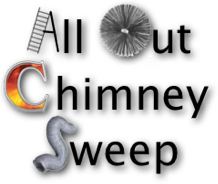Chimney swifts are small birds who got their name because of their inclination to nest in chimneys. They have also been known to nest in hollow trees and specially crafted nesting towers. It is common for homeowners to find a family of chimney swifts taking up shelter inside their chimney when accessible. Although birds themselves may not be seen at first, their chittering will likely be heard. Fortunately, chimney swifts do not pose a serious or permanent problem. That is not to say nothing needs to be done about it.

Contrary to popular belief, these little birds can be quite beneficial to have around a home. They aid the environment by feeding on flying insects that can be a particular nuisance to people and livestock. However, the chimney swift population has been rapidly dwindling, which has granted them protection under the Migratory Bird Treaty Act. This makes it illegal to deliberately disturb their nest while eggs and/or offspring are still occupying it.
The summertime is the breeding season for chimney swifts as they begin to migrate back up to North America during the month of March. This is also when you may find that a family of chimney swifts has moved in to your chimney. Once a nest is established for the breeding season, then it is simply a matter of waiting since by law the nest cannot be removed. Nesting and incubation can take approximately 30-40 days. It can be another 32 days before the offspring fully leave the safety of the nest. In the meantime, don’t worry because the nest is too small to be considered a fire risk. You will want to close off your fireplace to prevent the birds from inadvertently entering your home.
Come fall, after all the offspring are raised up and have left the nest, a professional can safely remove the nest(s), complete a thorough chimney inspection and complete any repairs. It is also a good idea to have a cap installed on the chimney so that no nesting occurs in the future. The chimney should be thoroughly cleaned by a professional before it is capped. It is also worth mentioning that many modern fireplaces and chimneys are designed to be inaccessible to these birds and other animals.

Capping a traditional brick chimney will eliminate the issue of chimney swifts nesting within a home. It is a solution that will prove safer for the birds as well. But, where will the birds nest now that your chimney is capped and favorable natural nesting sites are few and far between? Chimney swift nesting towers are a great way to help support the chimney swift population in your area. By placing the nesting structures in backyards and parks these areas will likely see a reduction in the amount of insects making outdoor activity more enjoyable throughout the summer.
Remember, one of the first signs of chimney swifts is a subtle chirping from your chimney. It may take a little while to realize that chirping is not coming from the outside of your home. When that occurs, do not be alarmed as these birds will not bring you any harm. A chimney sweep can be called to inspect the chimney and confirm your suspicions.
The reality of chimney swifts shacking up in your chimney is a reminder of how preventative measures can keep a chimney and fireplace operating efficiently all year round. It addition to this convenience, being proactive with prevention can be a lifesaver for a variety of animals that could otherwise inadvertently find their way into your chimney, become trapped, and parish. For this and other reasons, chimney sweeping Charlotte NC should be done annually.
We hope you have enjoyed reading about Chimney Swifts and return to our blog soon.
